Blogs
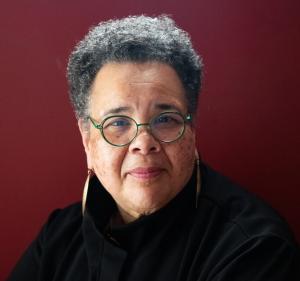
Below is the jargon which has pervaded our conversation. I call this the “re-” lexicon:re-designre-inventre-arrangere-imaginere-createre-thinkre-conceivere-examinere-visionre-considerre-workre-coverThe call to “re-” the system of education has been in response to shrinking student pools, dwindling tenure-track positions, collapsing denominational structures, tightening budgets, rising awareness of student debt, curriculum misalignment, and the mounting backlog of deferred maintenance on aging buildings. Even before the shift in the federal government’s relationship to education, theological education needed an overhaul. The list of words entered our discussion but their potential nor their aspiration has not been fully realized.Many schools have taken on the task of rethinking their institutions – most in reaction to crisis. Many of the “re” processes assumed that what has served well should be mended, fixed and pressed back into service. Administrators, in planning institutional changes, started with strategies to restore what had served admirably in the past. Many schools rethought their curriculum for existing degree programs, added certificated programs, replaced tenured faculty positions with the hire of contingency faculty, sold land, increased their endowment draw down, and hoped for increased student enrollment. These strategies, depending upon the context, have had a modicum of success. Indeed, some vulnerable schools have prolonged their demise. Other schools are announcing downsizing and closings. Our attempt at “re” is faltering.Not only have leaders failed to figure out a way to revitalize theological education as an enterprise, the patched-together strategies are likely not to be sustainable 5, 10, 20 years into the future. There is palpable fear that given the new realities of the digital age’s influence on teaching, exacerbated by the lack of crisis management skills of deans and presidents, schools will not accomplish the hoped for “reset” in theological education.We are confounded. Yet, we are persuaded.Theological leaders are convinced that our society—now and into the future—is better with a vibrant and thriving theological education enterprise. Leaders believe that the societal need for educated faith leaders—clergy and laity—has increased and will continue to grow. We believe theology and religion will prove more, not less, relevant in the digital age. We know that the church as well as all forms of organized religion are the major stakeholders in theological education. Our work is paramount—if only we can figure out how to craft new, accessible systems.Given the severity of the situation, what if it is ultimately detrimental to repair or restore our current paradigms of education? What if fixing the current system is tantamount to patching bicycle tires only to return to riding on nail-riddled roads? From my vantage point, our challenge, rather than repairing the current, is to let go of the past. We must freshly build, compose, make, and design news systems of theological education based upon a future we do not know but that is coming quickly.What if the solutions lie in building new systems from scratch? What would it mean to compose brand new approaches to educational needs? How can we fashion new pedagogical apparatuses? What would it take to manufacture the new and the needed educational models?Leaders have, in the past, relied on institutional traditions and strategic planning. Those tools were helpful, but no longer sufficient. Now is the time for a creative process. We must ask ourselves not about repair and retrench, but about the new. What new - that is yet to be realized -will be the very thing to produce the next educational system?This is not a call to be creative as much as it is a call to create.[caption id="attachment_253985" align="alignleft" width="300"] Najee Dorsey (BAIA) Nancy Lynne Westfield and Rachel Mills (Wabash Center)[/caption]The Wabash Center has partnered with Najee Dorsey. An exquisite artist in his own right, Najee is the founder of Black Art in America (BAIA). Under Najee’s leadership, BAIA is a community art gallery and garden dedicated to teaching art, creativity, and artist advocacy. BAIA hosts our cohort groups as part of an effort to expose our faculty to artists, the creative process, and imagination. Najee and the artist colleagues guide scholars in future-building ways of thinking. Participants engage directly with artists about their work and lives—as creators, producers, and visionaries. At BAIA, scholars encounter colleagues whose careers are devoted to building and making. The shift from being creative to becoming a creator requires tactile, embodied learning. Najee knows this terrain.In the conversations between the BAIA artists and our participants, I have noticed consistent themes in the conversations. Artists wake up each day with the question of What am I going to create? in the forefront of their minds, then align their schedule to accommodate time for creating. Creatives are not afraid to be wrong or make mistakes. We must consider that unless educational systems celebrate rather than stigmatize risk-taking, failure, and experimentation, no new systems will emerge. A creative process causes you to change what you can see and challenge what you have previously seen. Creatives do not believe dreams are ancillary to the process. They embrace visions, daydreams, visitations, nightmares, wishes and messages from earth, wind, fire and water. They inhabit many worlds. What would it take for us to, collectively, think in these modes and frames?Exposing theology and religion colleagues to the profound understandings of artists, artists’ lifestyles, as well as providing colleagues with a glimpse of the creative process is a way that the Wabash Center is championing the need for leaders in education to build, craft, make a new paradigm of theological education that is original and sustainable.I do not believe the future of theological education to be condemned nor foreclosed. Our future is, however, dependent upon our willingness and understanding that the new is needed and that we must, together, create the new if it is to exist. Who among us has the guts to proceed?ReflectionWhat would it mean to use the creative process to design and build new educational structures?What would it take to collaborate with artists in developing new educational structures?In your context, who are the conversation partners for the shift in mindset to a lifestyle and daily practice of building, composing, and making?

Welcome to the Common Questions, an exciting initiative brought to you by the Wabash Center for Teaching and Learning in Theology and Religion. In this series, we bring together some of the most esteemed scholars and educators in the field to engage with a central, thought-provoking question. The goal is to challenge and inspire. By exploring these questions, we hope to create a dynamic platform for scholarly dialogue, illuminate complexities in education, and enhance our understanding of the transformative power of teaching and learning in these vital disciplines. Featuring a diverse range of perspectives, this effort is a means of expanding the borders of academic rigor with profound spiritual and philosophical inquiry.This time, we asked…“We are all born with medicine inside of us: unique traits and attributes that contribute to healing humanity on this planet. How is your medicine utilized in your teaching?”Gathered here are responses from:Kristina Lizardy-Hajbi, Iliff School of TheologyRebecca Makas, Villanova UniversityCarol B. Duncan, Wilfrid Laurier UniversityHaruka Umetsu Cho, Santa Clara UniversityMolly Greening, Loyola University ChicagoLaura Carlson Hasler, Indiana UniversityFred Glennon, Le Moyne CollegeIf you are interested in sharing you response to this prompt or future Common Questions, please reach out to our blogs editor, Donald E. Quist at quistd@wabash.edu.

In terms of generative AI, I’ve been mostly hanging out in the “don’t feed our inevitable overlords!!” camp, so nobody should be looking to me for tips for ethically and thoughtfully integrating ChatGPT into their teaching this term.But a problem I do have to face head on is that whereas I used to ask my students to do certain tasks and was reasonably confident they would actually do them themselves, I now am not so sure. For instance, watching movies to prepare for a Religion and Film class. Now, Wikipedia and IMDB were available before – and past students may have availed themselves of these resources – but ChatGPT, Co-Pilot, and all their friends feel like a significant new leap in the “shortcutting work” frontier.I still think students should learn some of these skills. Reading a ChatGPT summary of a film isn’t the same as having the experience of watching the film and taking notes on it. I want them to pay attention to film technique, I want them to notice what personally interests or grabs them, I want them to situate their viewing in the context of a course on religion and consider what the movie is (purportedly) conveying about that religion.To solve this little issue, I’ve decided last semester to implement an assignment in my Religion and Film course that’s essentially “show your work.” I borrowed this from K-12, from my daughter’s 4th grade math class, where she’s expected not simply to record an answer that she mysteriously arrived at, but to demonstrate and write out the thinking and the process by which she arrived at that answer. I know instructors, even at the college level, who will give partial credit for answers that are wrong if the student work shown demonstrates the right kind of thinking.So, for every movie my students are supposed to watch for homework (and it’s about a dozen), they need to take their own extensive notes during the viewing. (We read advice about taking notes during movies, discuss note-taking techniques, and practice in class.) They then need to take photos of those notes and upload them on our LMS (Canvas) before class the day we discuss the film.These are the instructions that I give my students for this assignment (they remain the same for every film):To ensure that everyone is watching the films in their entirety, and engaging them with the level of focus/attention that this class requires in order to be successful, you will be asked to do the following for every movie:To earn 4/5 points, please upload photos of your own handwritten notes that you took during the movie. They should:span the entire length/duration of the movie (i.e., not just the beginning/end, a few places, etc.)focus on more than just plot, characters, and dialogue (i.e., you must address visuals and sounds)include particular time-stamped moments that seem significant to youconvey a level of detail that goes beyond a summary found online or that is fabricated by AITo earn the 5th point, and full credit, you will also need to include 1-3 discussion questions that you would like us to address in class about this movie. (Discussion questions are usually open-ended, not fact-based, why/how-focused, etc.)I have been SO pleased with the results. The students are turning in photos capturing pages and pages of amazing, thoughtful, engaged, detailed notes in their own handwriting (which I’ve come to know and love). They are including timestamps, they are noting the movies’ sounds, they are displaying their real-time – often hilarious – reactions (“that dang bell won’t quit,” “I’m 20 minutes in and I still don’t know what this movie is about,” “she’s only 17??”). I can tell they’ve watched thoroughly and thought seriously about the films. Their discussion questions are precisely the questions I would have asked, but I can now frame them as originating with the students – and following their own questions and interests.I’ve also been thinking about drawbacks or limitations to this type of assignment. For instance, one of my students, an athlete, hurt his wrist/hand this semester and so writing by hand is hard for him, in and out of class. What do I do about a student with this kind of injury… or a disability that might require note-taking assistance or the use of a computer to take notes? Allowing the notes to be typed out defeats the purpose, because typed notes can be (more) easily cribbed from elsewhere. I don’t have great classroom-wide answers to these questions yet (besides making exceptions for individual students).Still, based on the success of this experiment, I would like to figure out how to apply it in future courses and assignments. Could I have students turn in the notes that they took on reading assignments, for example? (I have sometimes incorporated “reading responses,” “reading tickets,” or even just questions to answer about the readings into my courses, which seems to be the same idea.) I know some colleagues who have resorted to doing everything in class, on paper, and/or by hand. I’m not sure I want to go this far. I appreciate having my weekly quizzes on Canvas. I don’t want to go back to the paper-wasting days of course packets. I need to be able to assign homework. (I also don’t want to totally revolve my courses around the assumption that all students are cheating all the time. This may be true, but I don’t want to operate in this distrustful, suspicious, surveilling way.)How can you imagine incorporating “show your work” into your own course designs?

Diversity is the standard for theological education. One of the dimensions of courage that we must have in our classrooms is the ability to see multiple perspectives. To word it differently, we must have the ability to put ourselves in another person’s shoes. I am reminded of the poignant song and video by Everlast, “What It’s Like.” Part of the problem in religious circles and in society in general is the complete lack of empathy. Empathy is defined simply as “the ability to understand and share the feelings of another.” It contrasts with sympathy, defined as “feelings of pity and sorrow for someone else’s misfortune.” Empathy means you are in (em) their suffering (pathos), and not only with them (sym) in their suffering (pathos).In online environments it is difficult to create empathy. After all, we are not in brick-and-mortar classes. We sit comfortably behind a screen and are not interacting in person. However, there are still opportunities to create a sense of empathy, and consequently being present, with one another – even if we are from different walks of life and from different parts of the world. In one of my classes I had students from Africa, Latin America, and the US. The students from the US in this class also reflected an incredible amount of diversity. My students are Black, Caucasian, Hispanic/Latin@, and of mixed race heritage. We are challenged to walk with one another and, at the very least, to understand each other’s perspectives.On the first day of class I strive to help my students get to know each other. Knowing is not merely knowing information about one another, but to enter into a relationship with one another (an affective move). The best way to do so is to listen to each other’s stories. For the last few years I have asked students to post a video of themselves in which they show an object that represents their personality and the significance of faith in their lives. I learned this tactic in a Wabash Workshop for early career faculty. Since then, I have found it to be a very helpful exercise. Most students have discussed a Bible that was gifted to them. Others post pictures of significant family members.This tactic presents opportunities to enter into another’s reality. One of my Black students posted a video where he quietly and soberly described the only gift he ever received from his father when he was three years old. It was a small jacket his father bought while stationed as a soldier in Vietnam in 1966. It had a map of Vietnam with place names and surrounding countries embroidered on the back along with the year, 1966. The student’s name was on a front pocket of the jacket. Except for occasional visits and this lone gift, his father was completely absent from this student’s life. For my student this reflected a lack – of stability, of responsibility, of keeping one’s own word, and of a loving family.My student later shared that when his dad passed away his thoughts toward him changed. He started missing him. He also started thinking about the opportunities he had missed with his father. The father’s own racial background and his experience in Vietnam meant his life had been marked by trauma, instability, and many struggles. Somehow, this jacket created an opportunity to empathize with his dad and to forgive him. My student stated that because of this experience, he desired to be a present male figure in his own son’s life.Two things stood out to me. First, I thought of all the pressing contextual issues in the life of my student’s father. The country was going through the Civil Rights movement (1954-1968). His father had been shaped by segregation, Jim Crow laws, and all the psychological harm of racism.[i] Black colleagues have shared that due to moving and different circumstances they cannot trace their ancestry back for more than one or two generations. His father was also a soldier in one of the most unpopular wars. The year 1966 was marked by mounting casualties and a sense of futility as superior US firepower could not break the resolve of the Vietcong. To create a sense of community and empathy in class, I encouraged my students to think of the trauma that this father had endured and of the courage that it took for the student to be transparent and vulnerable enough to share about this object.Second, I thought of the courage it took my student to forgive his father and to deal with this trauma as he built his own family. I thought of the resilience he demonstrated to be able to make sense of his own situation even though he may not have fully understood his father’s situation. Faith has played an important role in my student’s life, giving him language and ideas to deal with his own difficulties, and with his absent father. It also empowered him to take ownership of the situation and to pour out what he never received into the life of his own son.My student is a living testament to the courage reconciliation requires. The classroom made us walk together with this student who had a very different history from all of us. The online classroom required us to be present with him. My comments and responses were paths to give him necessary attention and models for how to respond to those who reveal trauma and become vulnerable to us. Most importantly, I, a Hispanic/Latin@ faculty member from a different generation, was able to empathize with this student. Hopefully, this distinct affective move was able to model a way forward in our conflicted cultural milieu. Notes & Bibliogrpahy[i] Robert T. Carter and Thomas D. Scheuermann, Confronting Racism Integrating Mental Health Research into Legal Strategies and Reforms(Routledge, 2020).

I am writing this blog post with my 8-year-old daughter’s voice still ringing in my ears: “Yes—it’s difficult, but it’s fun.” As a student, she said it during a violin lesson after wrestling with a new bow technique. Anyone who has practiced an instrument may know the scene—scales repeated until fingers ache, a teacher correcting the same motion for the tenth time. We often tell our children (and our students as well), “Practice makes perfect,” but the road to perfection is slow, repetitive, and occasionally tedious.My daughter’s shy voice—“difficult, but fun”—captures what philosopher Alasdair MacIntyre calls an internal good: a genuine joy experienced only inside a repetitive practice. External goods certainly loom large in my daughter’s world—a coveted seat in the district orchestra, a résumé line that thrills her parents. For her, slow and repetitive practice is “difficult”: she may desire a “shortcut” to finish practice quickly and play with her friends. And yet, in the middle of that drudgery, she found a deeper joy: the quiet thrill of coaxing one clear note from stubborn strings. Here, (slow) formation, not (fast) efficiency aimed at external validation, is the point.Technologists assure us that artificial intelligence will free us from menial work so we can focus on more meaningful and creative work. When I asked ChatGPT about its educational role, it offered the usual optimism, focusing on efficiency:"AI can be a powerful tool to enhance human productivity and creativity. Rather than replacing us, it can augment our abilities, making work more fulfilling. In this way, AI doesn’t just make life easier—it helps us reimagine what work means and empowers us to spend more time on what truly matters."The pronoun us jumped out at me. AI speaks as though it already shares human aims. But does it grasp what makes learning formative rather than merely efficient?Let us picture a humanities classroom. Reading primary texts—Aristotle’s Nicomachean Ethics, for instance—often feels like violin practice: dense, slow, and sometimes tedious. A student can now upload the text, prompt an AI for a synopsis, and receive an instant outline. Hours saved, concepts clarified, quiz scores boosted—external goods secured.Yet that shortcut bypasses the internal good of reading itself. Lingering over a paragraph is not wasted time; it is the learning. More importantly, as we read, the text also reads us: a paragraph questions an unspoken assumption, an unfamiliar idea enlarges imagination, a story strangely mirrors our own. None of that occurs when we outsource reading to the so-called “efficient” AI.When we reframe reading as a powerful practice of formation, tedium turns into joy. While we move through the words, we are simultaneously moved by them—seen, challenged, and reshaped by voices from centuries ago or a continent away. Out of that slow interaction emerges the joy of reading for its own sake. It becomes an interior reward that resists quick translation into productivity metrics.Such formation extends well beyond the classroom. Someone who once wrestled patiently with Aristotle may later join a neighborhood book club simply for the pleasure of shared discovery. The capacity to be transformed by texts—through a time-consuming, attention-demanding encounter—is a deeply human gift that no algorithm can replicate.On the other hand, from a social ethics perspective, I am concerned about the issue of accessibility to this formative dimension of education. As AI more embeds itself in education, the formative joys of slow learning might risk becoming a privilege. Students juggling multiple jobs or heavy caregiving duties are the ones who would be more tempted to outsource reading to generative AI tools. If engagement is priced in hours only the well-resourced can spare, we reinforce inequities that we, as educators, claim to resist.Although we continue to work on this challenge, it is crucial for us as educators to foreground formation—particularly communal formation—in our pedagogy. Yes, AI can be a powerful tool. And it can help students in many ways. For example, AI may serve as a tutor, offering personalized learning experiences. Nevertheless, we need to re-claim the distinct human gift in the slow, shared process of learning. It is the dimension of education that makes us who we are, as individuals and communities, and that AI simply cannot provide. Yes, it is difficult, but fun!
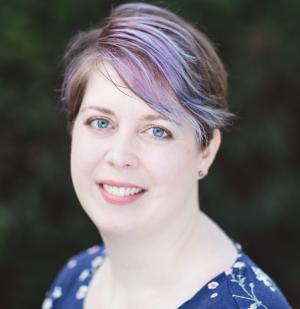
In my first blog on this topic I tackled the question of how to create attendance policies that are suitable for the class content and context. But all this focus on the students neglects one more important factor – what about an attendance policy for the instructor?This was not a major concern of mine when I began teaching, but in the years since, I have had children and communicable illnesses have become a substantially more regular part of my life. I also began my current role in Fall of 2019, just before the pandemic began, which changed much of our larger discourse about “pushing through” illnesses and being present no matter what. But the same issues arise for any instructor who discovers they have to cancel a class unexpectedly – anyone who needs to do more complicated travel to get to a conference than expected, who is invited for a guest lecture with limited lead time, who is on the job market and might get a coveted on-campus interview. How do we cancel classes well?Now that I have a preschooler and a kindergartener, I cannot get through a semester without a cancellation due to their illnesses (which invariably become my illnesses). This term, I finally wrote an attendance policy for myself that I included in my syllabi. Here are a few things I considered while creating my expectations:As with any job, advance notice is best. I have promised my students that I will let them know class is cancelled as soon as I possibly can – which sometimes means I need to make a decision the night before rather than the morning of. When in doubt, I err on the side of cancelling if I’m sick – nobody needs my lecture enough that it’s worth them getting ill.I will not require my students to do any “makeup” work that takes more time than a normal class would have; whenever possible, I will keep makeup assignments significantly shorter than class time. Piling on unexpected work just feels unfair to me, but this standard is also key since I may not have an alternative assignment available by their usual class time. I need to respect that the hours students carve out for my course might be all the time they have, and additional work may cost them time they have to allocate elsewhere. I can show respect for my students’ complex lives by keeping things concise.When alternate assignments are needed, I use methods that students are already familiar with so that they are not wasting time trying to explore a new technology when I want them to be focused on course content. If I don’t use discussion boards in a class, I don’t ask students to use a discussion board for a cancelled day. Typically, I record my classes and rely on the video to create a shortened lecture.Sometimes, just skipping the day is fine. This won’t be possible for all sorts of courses – when classes are composed so that prior concepts need to be fully understood before moving on, skipping may never be an option – but my own course design is more iterative and removing any one day isn’t going to collapse the structure. I always mourn when I have to pull out a day of content that I love, but sometimes it’s better for my students and myself to move on without stressing about covering every single idea and story that I hoped for.We don’t plan our syllabi with last-minute changes in mind, but having a few priorities when imagining cancellations – and taking a moment to craft your own instructor attendance policy – can save you time and headaches when things don’t go as planned.

If I have learned anything in this life of teaching, it is this: the emotional labor of teaching is genuine. Routinely, class sessions left me exhausted. After most sessions I would need to sit in silence for an hour to regain my energies or have a meal to replenish my body. The depletion was never from a lecture, but from the intensity of conversation with students. The emotional labor of teaching occurs due to the full engagement of body, mind, spirit, guts, wit, intuition, intellect, and humor, all summoned in the teaching encounter.When we do our teaching work well, classroom conversation can be powerfully interactive—for students and for us. Teaching religion, in confessional or non-confessional institutions, can stir up cultural tensions, stretch personal beliefs, raise consciousness and reenforce ethical obligations. Classrooms where the pursuit of truth is passionate, enthusiastic and exciting can take an emotional toll on the teachers because of the emotional investment in the endeavor. Interactions with students are often fulfilling but never neutral. The intensity of the conversation when students are expressing curiosity, thinking deeply, connecting previously disconnected ideas, and experiencing new insights can tax our emotional reservoirs.Emotional labor in the classroom is not a flaw, nor a side effect. Teachers who extend themselves, make themselves available, and open their hearts to students must realize that emotional presence—from delight to disappointment—is part of the work of teaching. Regardless of the season in one’s career, navigating identity, belief, and culture without falling into advocacy or detachment is hard. Vulnerability can be costly.For those of us who must contend with the disrespect, disregard and indignity foisted upon us by students who judge us as inferior due to our gender, race, nationality, age, or physical ability, the emotional toll assumes the jagged dimensions of discrimination and injustice. Classroom spaces riddled with unfair bias can be debilitating.To further complicate the challenge, students’ habit of coaxing teachers into boundary-blurring or insisting upon role overload can be aggravating. As an African American woman, students would treat me like women in their families or in their churches. Too often I was relegated to the status of deaconess, mother of the church, pastor’s wife, auntie or favorite cousin. Students, because of their lack of familiarity with an African American woman as a professor, and to appease their nervousness, would think of me as their counselor, lover, therapist, or friend. Many students would signal that I was like a familiar TV character—Florence Johnston, Oprah Winfrey, Aunt Viv or Clair Huxtable. I refused this status. I rejected the blurring and projection of these roles. I was their teacher. Being a teacher is a status, role, and an obligation worthy of pursuit and needs no appendages, additions, or attachments.The emotional labor needs to be monitored, nurtured, and attended to. Over long periods of time, the labor can erode us. Burnout, disengagement, cynicism, ill-health, or depression must be avoided. Here are some strategies I have learned over the many years.Practical StrategiesPractice Grounding Ritualsmeditate and pray before class to center myselfstart class with breathing or meditationPlan the emotional rhythm of the semesterplan for low intensity class sessions, e.g. a trip (on or off campus), showing a film, guest speaker, art activity, playing a gameplan for time during the semester for rest and reflectionParticipate in peer support groups or professional support sessionsroutinely talk with colleagues or friends throughout the semestercontract a therapist, spiritual director, cleric, or counselorBe aware of burnout symptomsknow the symptoms of depression, burnout, fatigue and monitorjournal concerning your emotional health as pertains to teachingBe mindful of your own humannessmake sure you do not teach while over-tired or sleep deprivedbe well hydrated and not hungry in the classroomdress in clothes that make you feel confident and that are comfortableWe must find ways to stay emotionally connected while attending to our own needs. The emotional strain of teaching is part of the job but does not have to be a detriment of the job.Reflection QuestionsWhat are the moments that renew you in teaching? How can you plan for those moments?How do you plan your sessions so there is a rhythm to the semester?What conversations or practices help you stay grounded?What habits, practices and behaviors help you sustain your truest self in the classroom?What toolkit can you build for your emotional health and wellbeing?
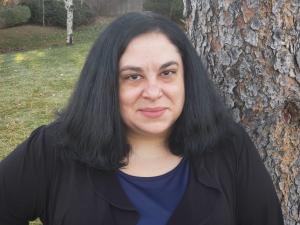
* Karen Yourish, Annie Daniel, Saurabh Datar, Isaac White, and Lazaro Gamio, “These Words Are Disappearing in the New Trump Administration,” The New York Times, March 7, 2025, https://www.nytimes.com/interactive/2025/03/07/us/trump-federal-agencies-websites-words-dei.html.
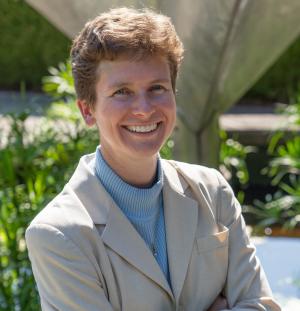
A former student recently got in touch with me to catch up after a few years of silence. He said I was one of the few people who made him feel truly seen, and that’s what he needed right now. As we chatted, he asked about my Jan term backpacking with students in an Arizona canyon. When I described it to him, he replied, “That should called ‘Being in Awe 101!’ Actually, I think all of your classes should be titled that.” I like it. Being in Awe 101.He picked up on a particular element of my pedagogy that is always a goal but is especially potent in my outdoor courses: wonder. We know that children are great at this. They wander around the world enthralled, wondering at everything. We know as teachers that if we can only get students to wonder about something, then they can learn – that they learn much better if they are curious than when we tell them that they have to memorize this thing they find boring. We know the power of wonder in a classroom.Taking my students outside facilitates more wonder among them than I can generate in the classroom. I hear the question: Does making my students sit in the garden outside the English department building really make them wonder better about the reasons for the Council of Nicaea? Well, yes. When my students sit outside for class, they are generally more open. They feel like they can breathe and even, often, like they’re getting away with something. I’ve said as much before. That sense of freedom and of getting something past the authorities helps them drop their guard, be less armored about what they think is being asked or required of them in class. That openness allows the material to get past the bouncer in their brains. That openness is space for wonder.Sometimes quail run through the outdoor classroom and disrupt us in a way that makes us all laugh but also takes us out of “I’m a student and have to learn this thing my professor is saying” mode. Sometimes their internal bouncer gets wondering about the butterfly that floats near them and then is willing to wonder about the conversation happening in their group work. Even just noticing the colors of the flowers in the garden or the smell of the mulch is enough to cause that disruption. And once they wonder about one thing, they’re in a posture of wonder. Then, perhaps, they wonder about the discussion we’re having about the reading.We know we can inculcate wonder under the fluorescent lights, too. We associate with the Wabash Center because we care about creative ways to induce wonder. I only suggest that taking students outside can be a shortcut. Unless it’s raining. A good hike in the rain on a lengthy backpacking trip can still invoke wonder with the right attitude, but I admit that taking a normal class out in the rain will be more distracting than wonder-ful. Sometime I’ll tell you about the time I lost an entire class because the first day of rain that semester was in November and they didn’t know where our classroom was. Even that was the kind of disruption that calmed the internal bouncers.At one Wabash cohort workshop in Crawfordsville, I was excited that canoeing was an afternoon option because canoeing is maybe my favorite thing in the world. One of my cohort colleagues and I ended up in a canoe together. We had a lovely conversation at one point along the river about being awake to God. About that time a bald eagle soared overhead. We wondered together awhile. I watched my colleague – already a joyful, brilliant, fully alive person – become even more alive in her wonder. Months later she told me how she carried that moment of wonder back to her family and her world and the effects it had.The wilderness surprises us. It disrupts our “normal” with its “normal.” We are less able to pretend we’re in control when this happens, and I think this is why it is a place ripe for wonder. Our eyes are more open. They have to be, or we’ll miss the surprise. Or we’ll be surprised by something that feels more like an attack. We keep our eyes open outside and look closely at what’s around us. We see more clearly. This is the wonder.I suggest that as important as wonder is for learning, wonder is more important for being a decent human being among other human beings. It’s not enough to wonder in order to learn; we must also wonder about others in order to see one another clearly, in order to delight in one another. Wonder is the posture we need for awe to take root, and also delight. As we take our students outside to facilitate their wonder, they are practicing for more than the exam. We give them an experience of seeing deeply and of being deeply seen, and the wonder that produces will generate even more wonder. Perhaps then we’ll stand a chance in this world of wonders.
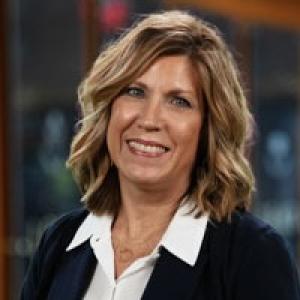
We live in a world fraught with compartmentalization. Work outfits vs. weekend wear. Neighborhood friends vs. work colleagues. Convocation vs. chapel. I get it. We like to orient our world based on neatly stacked boxes where we can stuff the various facets of our lives. The problem is this doesn’t reflect the design principles that surround us or the various environments in which we live and operate. We know from a study of nature that everything is connected to everything else. Callenbach reminds us that there is a mutualism or symbiotic relationship in natural ecologies that prevents compartmentalization. He asserts, “Nothing alive exists in isolation from its ecological context. . . . Symbiotic relationships . . . are a universal way in which life forms survive and coexist.”[1] Each of the various ecological elements mutually interconnect with one another. As Taylor reminds us, “Apparently, there is little rugged individualism in nature.”[2]A few summers ago, I took up gardening. More specifically, I attempted to grow my favorite tomato variety, Celebrity. I found planters under the deck with some soil already in them and plopped my seedlings into those boxes. I found a shady spot by the house where they could thrive. I finished my project and waited to see what would happen! However, the saying “out of sight, out of mind” very much applied to my situation. They were out of sight, so watering wasn’t a priority. I barely even tended to them other than to impatiently check for growth. You can probably guess what happened to my hopes of a plentiful tomato crop. I discovered that tomatoes need a lot of sunlight. They also need regular watering, proper soil nutrition, and ongoing tending. This includes removing suckers, staking the plants, and checking for blossom end rot. Everything in that tomato’s ecosystem impacted everything else. Sadly, we didn’t eat a lot of tomatoes that summer, but I learned some important lessons: nothing thrives in isolation and intentionality is critical to growth.These lessons from the natural world apply to teaching and learning. We may think that teaching is a disconnected enterprise, but just like the tomato garden, it is part of a larger ecosystem or constellation of interconnected elements. Our students are connected to one another in a variety of ways including their families of origin, friends, neighbors, co-workers, faculty, staff, communities of faith, and to the broader world. They bring all these social connections and relationships like checked baggage to our classrooms. Not only that, they also take what they have learned back to their respective relationships, responsibilities, and even life contexts. The reciprocal dynamic at work in all natural, social, spiritual, and learning ecologies nurtures growth because of the impact bi-directional engagements have on the teacher and learner.[3] The learner isn’t an isolated element in the classroom but rather brings a number of connections from their social networks, life experiences, ministry opportunities, and adult responsibilities. Bronfenbrenner used the language of nested ecologies to describe the various levels or environments in which a person engages and develops.[4]These complimentary ecosystems interconnect with each other as a way of facilitating and stimulating mutualistic growth.When learning is connected to the student’s multi-contextualized realities, we see impact not just in test scores or nicely articulated papers but also in a holistic approach to navigating the world around them. In one class I teach, my students learn how to develop and use a modified form of Hartman’s ecomap[5] called an ecoplan. In this plan, they must identify a daily strategy to address an activity or a way of being, centered around all six dimensions of a whole person formation model, (physical, mental, emotional, social, moral, and spiritual) first proposed by Ted Ward.[6] For example, on Mondays, they will commit to some form of physical activity, intellectual exercise, emotional engagement, social practice, moral obligation, and spiritual discipline. Something similar is identified for each day of the week. At first it seems overwhelming to them but once they start implementing their plan, they’re often amazed at how easy it is to incorporate an integrated approach to how they live. They begin to understand that what happens in one of the dimensions impacts and is impacted by all the others. They see that proper attention to physical activity has an impact on emotional health. Similarly, intentionality with respect to spiritual practices has an impact on their relationships to one another, and healthy emotional habits may influence mental health as well.In all that we teach, we should be mindful that there is an inherent and inescapable connection between the content we deliver, the teaching that we facilitate, and the way in which students live out what they are learning. When our teaching accommodates these human ecosystem dynamics, we create a far richer learning experience and one that potentially creates lasting impact. Teaching, from this perspective, shifts from content management to formative integration of content.Once we understand that the educational compartments we construct have to be permeable and connected to others, we have an opportunity to radically reshape teaching and learning paradigms. Here’s to a bumper crop of tomatoes andintegrated learners! Notes & Bibliography[1] E. Callenbach, Ecology: A Pocket Guide (University of California Press, 2008), 134.[2] W. Taylor, “Significance of the Biotic Community in Ecological Studies,” The Quarterly Review of Biology 10, no. 3 (1935): 296.[3] S. Lowe, and Lowe, M., Ecologies of Faith in a Digital Age: Spiritual Growth through Online Education (IVP Academic, 2018).[4] U. Bronfenbrenner, The Ecology of Human Development: Experiments by Nature and Design (Harvard University Press, 1979).[5] A. Hartman, Finding Families: An Ecological Approach to Family Assessment in Adoption (Sage Publications, 1979).[6] T. Ward, Values Begin at Home (Victor Books, 1989).
Categories
Write for us
We invite friends and colleagues of the Wabash Center from across North America to contribute periodic blog posts for one of our several blog series.
Contact:
Donald Quist
quistd@wabash.edu
Educational Design Manager, Wabash Center
Most Popular
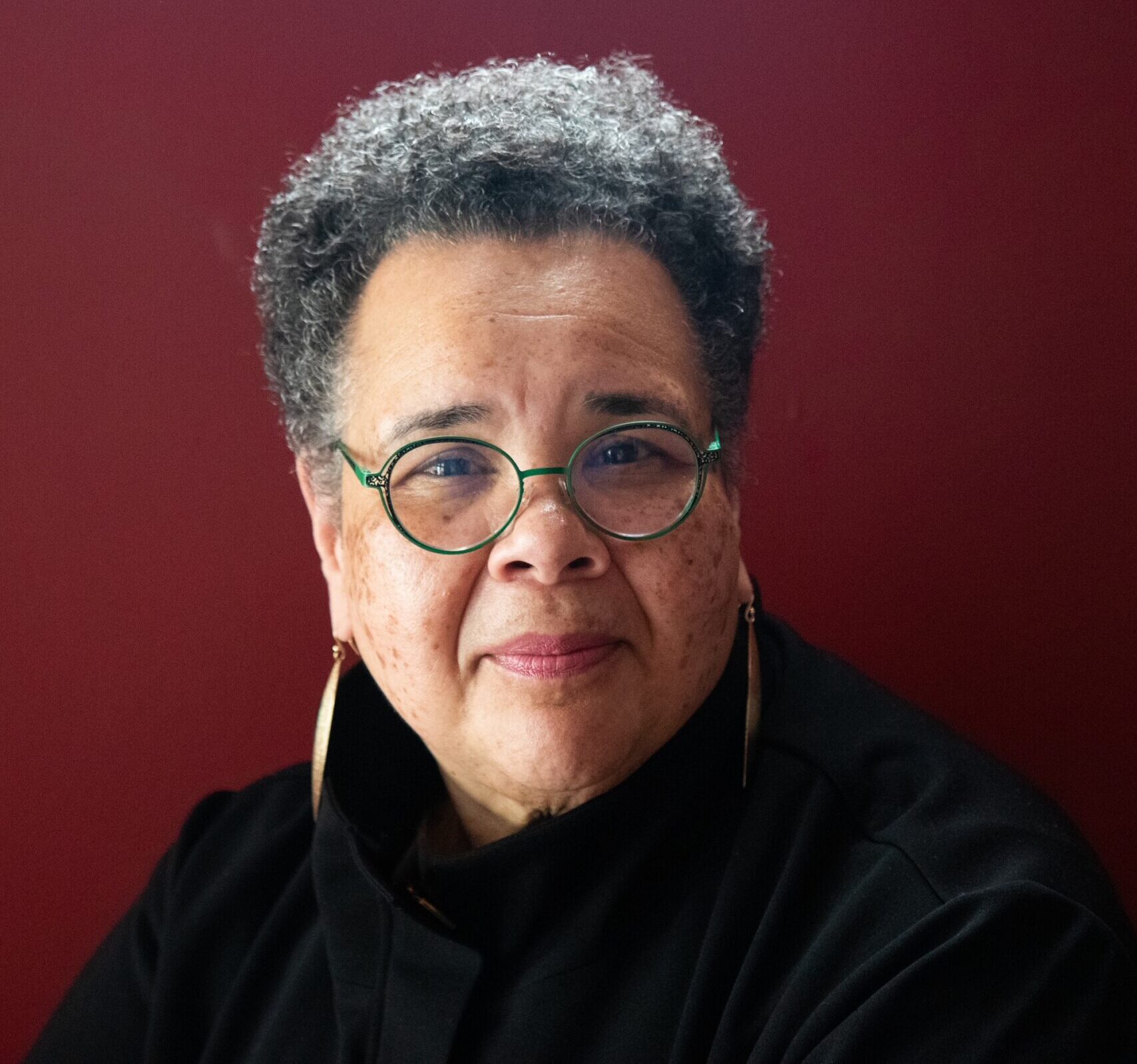
Are You Okay?
Posted by Nancy Lynne Westfield, Ph.D. on October 1, 2025
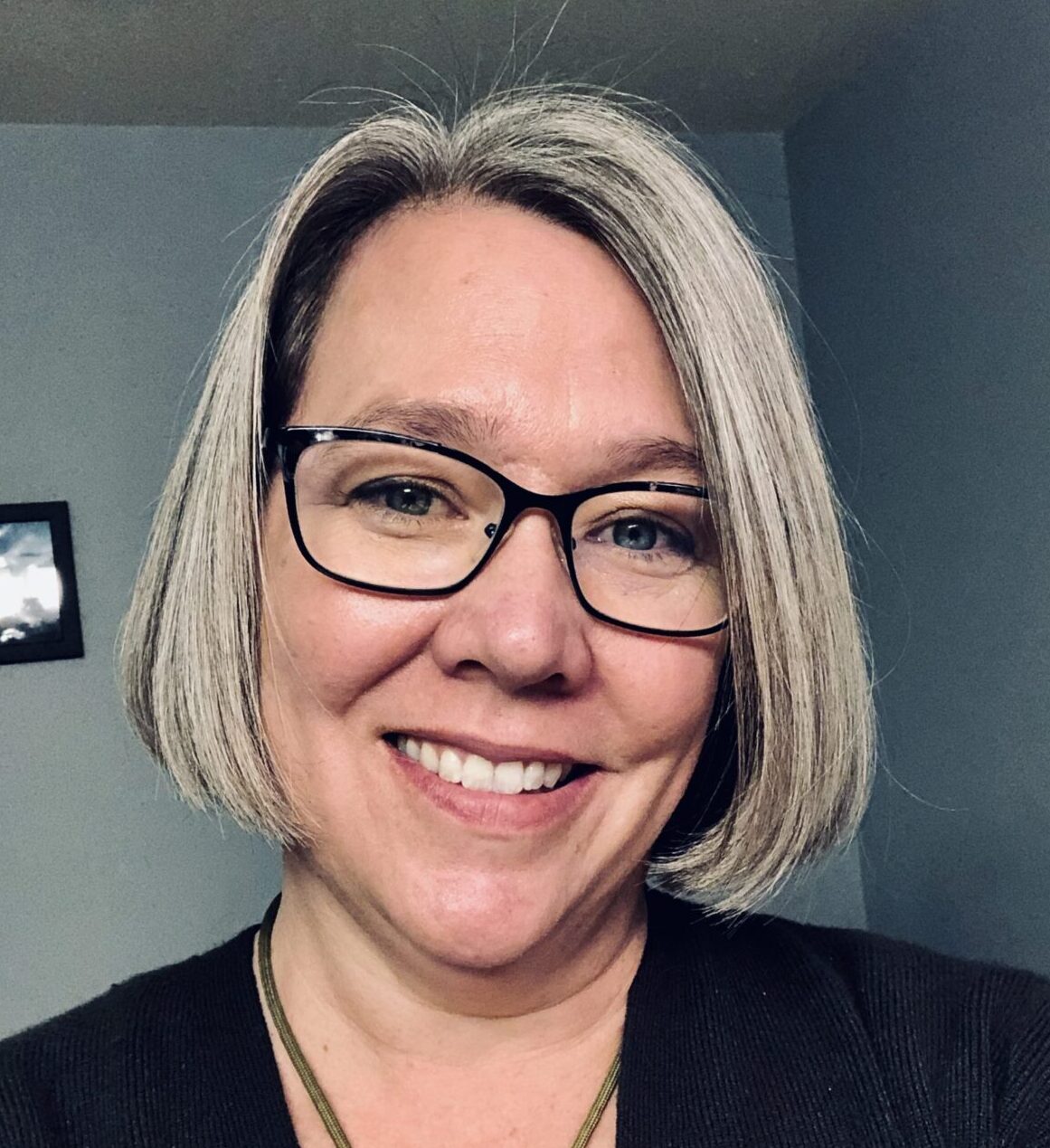
On Plagiarism and Feeling Betrayed
Posted by Katherine Turpin on October 27, 2025

Executive Leadership Involves New Questions
Posted by Nancy Lynne Westfield, Ph.D. on December 1, 2025

Embracing the Imposter Within
Posted by Fred Glennon on September 15, 2025
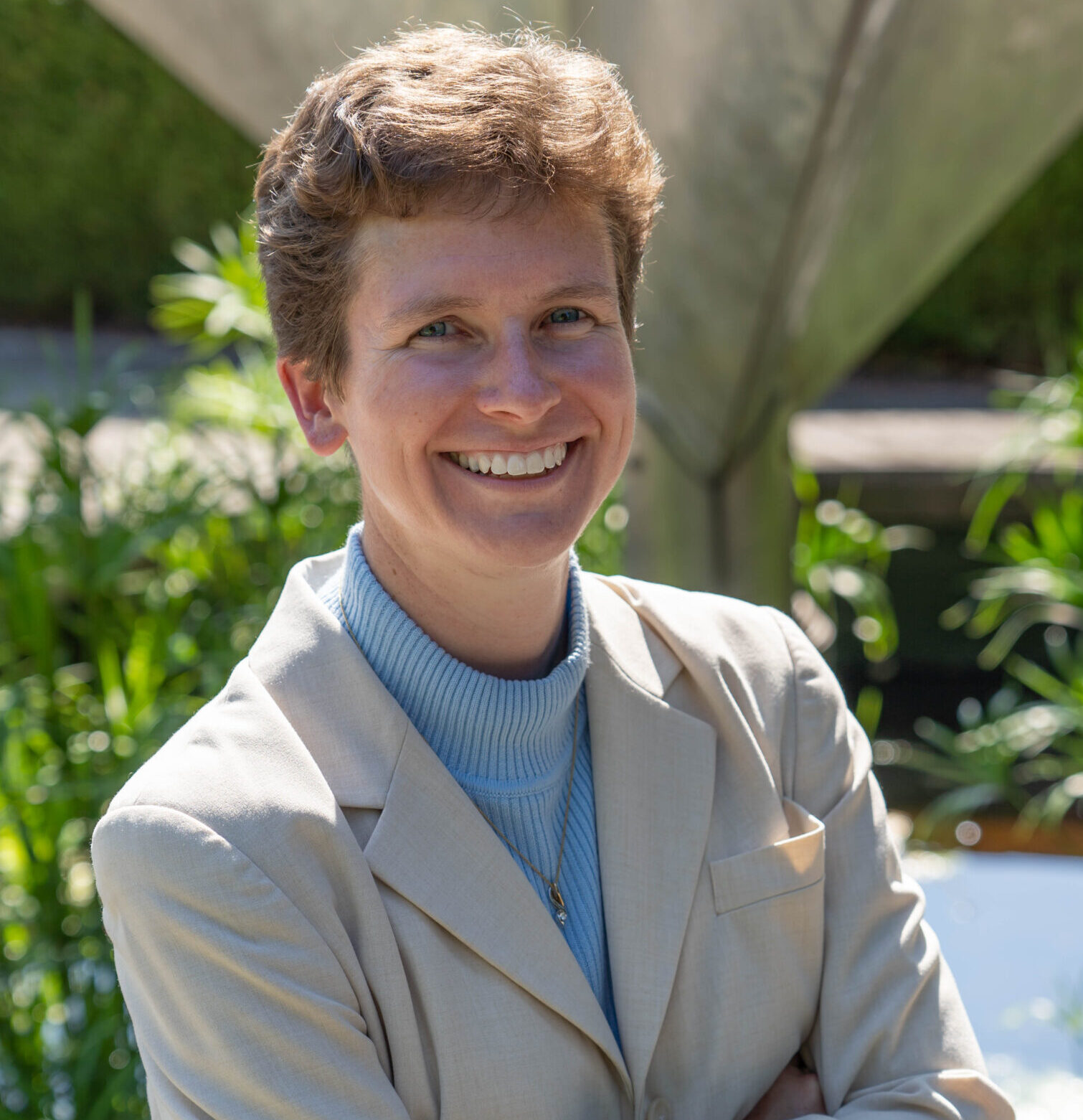
Analog Versions of Digital Classrooms
Posted by Samantha Miller on October 8, 2025